#hiromi yamaguchi
Explore tagged Tumblr posts
Text


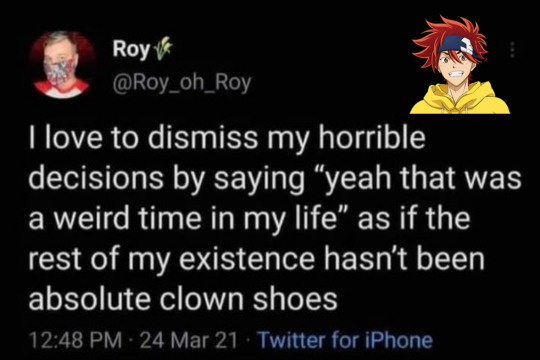





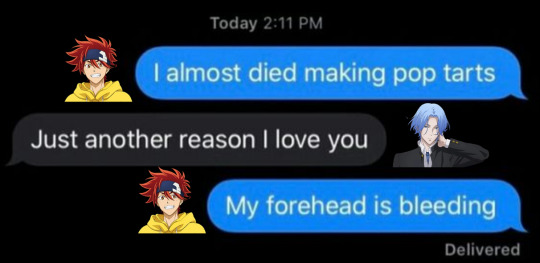

#sk8 the infinity#sk8 the infinity meme#sk8 the infinity shitpost#reki kyan#langa hasegawa#kojiro nanjo#kaoru sakurayashiki#miya chinen#shindo ainosuke#yamaguchi tadashi#hiromi higa#renga#matchablossom#tadaai#thank god there's a ship name for them other than. that one
537 notes
·
View notes
Text
70s Japan Trends Through the Music Charts (Part 2)
During the 1970s, the Japanese music industry was in the process of forming its identity. In addition to mirroring the musical preferences of the nation, the charts also served as a reflection of the prevailing societal trends and ambitions of that era. In this series, we chronicle the most significant musical trends of the decade.
70s Japan Trend Through the Music Charts (Part 1)
Trend #4: The Impact of Discover Japan
In 1970, Osaka hosted the World Expo, marking a significant milestone for post-war Japan following the 1964 Tokyo Olympics. To accommodate the influx of visitors, the government expanded the rail network, enabling over 60 million people—half of the nation's population—to journey to the World's Fair. However, as the Expo drew to a close after six months, concerns arose about the railways becoming obsolete. So, with the help of the ad agency Dentsu, they devised a campaign to stimulate domestic tourism by rail. The result was "DISCOVER JAPAN," one of the most iconic campaigns of the decade (which, curiously, was partially inspired by Ivy Fashion brand VAN).
"DISCOVER JAPAN" profoundly impacted Japanese society by popularizing solo travel and igniting domestic tourism, particularly among young women who ventured out on their own. This trend was further fueled by the launch of the first female fashion magazines, AnAn and Non-no, both of which regularly featured articles on charming touristic cities across the country. Cities known as "Little Kyoto," which retained their Edo Period architecture and charm, were particularly attractive to these travelers.
Influenced by fashion magazines, these trend-conscious women journeyed to towns throughout Japan, earning them the moniker "AnNon" (a fusion of AnAn and Non-no). Their impact during the 1970s was significant enough to be mentioned in a song by Sada Masashi, one of the decade's prominent folk singers.

"DISCOVER JAPAN," the print and TV campaign devised by Dentsu, is one of Japan's most successful and era-defining marketing campaigns.
Sada Masashi rose to fame in the early 1970s as part of the folk duo Grape before launching a successful solo career. In 1977, his song "Ehagakizaka," which paid tribute to his hometown of Nagasaki, mentioned identically dressed stylish young girls in denim, clutching AnAn and Non-no magazines while photographing their surroundings. This song vividly captured the aspirational girl culture of the 1970s, characterized by "healing" domestic trips in pursuit of tranquility and small pleasures, hippie and boho-inspired fashion, and folk music as the soundtrack.
Masashi Sada's song and the AnNon-zoku tribe aside, "DISCOVER JAPAN" had an immense impact on different layers of Japanese society. And that included the music charts. In 1971, the two best-selling singles, "Watashi no joka-machi" by Rumiko Koyanagi and "Shiretoko ryojou" by Tokiko Kato, surpassed 1 million copies sold. Both perfectly embodied the campaign's spirit in highlighting the hidden beauties of Japan.
"Watashi no jokamachi," or "My Castle Town," marked Koyanagi's explosive debut, selling over 1.3 million copies. This enka-infused kayokyoku ballad paid homage to cities with Edo-like architecture, often centered around a feudal lord's castle, evoking a peaceful, melancholic atmosphere in its lyrics. Rumiko continued to sing about regional Japan's charms the following year with another hit, "Seto no Hanayome" (The Bride of Seto). Meanwhile, the folk-inspired "Shiretoko ryoujou" (Shiretoko Journey) celebrates the unique beauty and culture of the Shiretoko peninsula on Hokkaido Island.
In the same year, other artists also succeeded by spotlighting provincial Japan. Enka superstar Shinichi Mori delved into this theme with "Boukyou" (Nostalgia). At the same time, Yuuko Nagisa found success with a Japanese rendition of The Ventures' "Kyoto Doll," titled "Kyoto no Koi" (Love in Kyoto). She would go on to have another top-selling single with her version of another Ventures song, "Reflection in Palace Lake," transformed into "Kyoto Bojo" (Kyoto Longing).
Trend #5: The Legend of Momoe Yamaguchi
"Aidoru" or "idols" are cute girl/boy-next-door types who sing, dance, act, host TV shows, and star in countless commercials. They stand as one of the cornerstones of the thriving multi-billion yen Japanese entertainment industry. The 70s was an essential era for consolidating this type of star. And one idol, in particular, shone the brightest: Momoe Yamaguchi.
Momoe is a legendary star and an example of an "aidoru" who excelled at everything, exuding sophistication, talent, and sex appeal. The fact she retired from public life at the height of her fame cemented her mythical status.

Momoe Yamaguchi in her prime, the idol industry's gold standard.
In 1972, at the tender age of 13, Yamaguchi auditioned for the talent search TV show "Star Tanjou!" (A Star is Born). Her crisp singing voice and mature beauty immediately captured the industry's attention. Hori Production, the entertainment agency, and Sony CBS label swiftly recognized her potential and signed her. In May 1973, five months after her televised audition, she made her official debut with the single "Toshigoro" (Adolescence). Although Sony had a history of immediate success with newcomers, Momoe's first single received a tepid response, so her label decided to court a bit of controversy for her sophomore outing. "Aoi kajitsu" (Ripe Fruit) had the innocent-looking 14-year-old girl singing, "you can do whatever you want to me, even if they say I'm a bad girl." The racy lyrics worked, and the single was a success.
A few months later, Yamaguchi's backers repeated this formula with "Hito natsu no keiken" (One Summer Experience). The song began with a suggestive promise: "I'll give you the most precious thing a girl has." The lyrics were laden with double entendres, describing a "sweet trap of temptation" that can only be experienced once. She sang, "if the person I love is pleased, then I'm happy. I don't mind if you break it," which could be understood as a reference to a girl's heart or hymen.
The single was an explosive hit, propelling 15-year-old Yamaguchi into the A-list. For the remainder of her career, she was frequently asked about the "most precious thing a girl has," to which she'd always offer a stern-looking reply: "Her devotion."
The young, mature-looking girl singing thinly veiled songs about sexual awakening with a dark, serious-looking image set her apart from the prevalent happy-go-lucky idol aesthetic. However, it wasn't merely reliance on gimmicks that transformed her into a legend. In 1976, after firmly establishing herself as a star, she parted ways with her frequent collaborators, lyricist Kazuya Senke and composer Shunichi Tokura. Beginning with the single "Yokosuka Story," she partnered with the husband-and-wife duo Yoko Aki and Ryudo Uzaki.
Ryudo Uzaki, the frontman of the popular enka rock band DOWNTOWN BOOGIE WOOGIE BAND, infused her kayokyoku tunes with a rock edge. Through her lyrics, Yoko Aki redefined Momoe's image as a confident, clear-eyed girl transitioning into womanhood. Sony initially opposed Momoe's desire to collaborate with Aki and Uzaki, but the partnership ultimately helped her reach her commercial peak.
"Yokosuka Story" was Momoe's first single to reach the number 1 spot on the weekly charts. The Aki-Uzaki duo penned several other hits for her, including "Playback Part 2" and "Sayonara no mukougawa" (The Other Side of Goodbye), and opened doors for her to collaborate with other luminaries of Japanese music. Two of her most memorable hits, "Cosmos" and "Ii hi tabidaichi" (Beautiful Day Departure), both released in 1978, were penned by folk superstars Masashi Sada and Shinji Tanimura of Arisu, respectively. The latter became the theme song for the iconic DISCOVER JAPAN TV commercials.
Speaking of commercials, idols worth their salt can't limit themselves to music. Momoe earned millions as the face of Toyota cars, Fujifilm photographic films, Casio watches, and Glico confectionary products, among others. She also starred in highly rated TV dramas and ventured into the world of film.
Starting in 1974, she appeared in two romantic films per year, always paired with Tomokaza Miura as her co-star. While Momoe pursued various ventures, Miura's acting career primarily revolved around being her on-screen romantic partner. Their undeniable chemistry and the box-office success of their films led to them being known as the "golden combination."
In a concert at the end of 1979, Momoe stunned her audience by revealing that her on-screen partner, Miura, was her real-life boyfriend. In a subsequent press conference in March of the following year, she confirmed her intention to marry him and retire officially. In September, she released her autobiography, which sold over 1 million copies in a month. In October, she bid farewell through a series of TV specials and a concert at Nippon Budokan. Her farewell concert reportedly earned Hori Productions over 20 million dollars, according to figures provided by the agency to Billboard magazine at the time. Momoe's success allowed HoriPro to become one of the best-established entertainment agencies in Japan, a position it still holds today. Her final performance took place at HoriPro's 20th-anniversary event, where she sang "Ii hi tabidaichi." In November, she married Miura and disappeared from the media.
The Japanese public obsession with her never waned. Paparazzi tried to capture her at her son's kindergarten graduation ceremony and doing classes at a local driving school. Many speculated she'd eventually come out of retirement. She never did, which only helped feed the obsession around her.
During the 1970s, Yamaguchi enjoyed immense success, but she was one of many popular female idols. The narrative created by her retirement elevated her to the status of a larger-than-life legend. She became the gifted, beautiful young woman who succeeded as a singer, a TV actress, and a movie star before choosing the ultimate happy ending: marriage. By choosing love, Momoe Yamaguchi, the legendary idol, transformed into an ordinary woman—a real-life fairy tale that resonated deeply with Japanese society.
Her decision was driven by profound motivations. Momoe revealed in her autobiography that she was raised by a single mother, the product of an extramarital affair. Her challenging upbringing and her father's late appearance to capitalize on her fame instilled a deep desire for a traditional, happy family life. She also grew weary of the relentless demands of stardom and the repetitiveness of performing the same songs. Thus, she made a heartfelt choice to relinquish fame and public life to give her husband the most important thing a girl has: her devotion.
Trend #6: Idols' Rise
The term "idol" in the Japanese entertainment industry finds its origins in the French film "Cherchez l'idole" (1963), which enjoyed immense popularity in Japan. Initially, "Aidoru" was used to describe the film's star, Sylvie Vartan, before it evolved into a general term to describe youthful-looking triple-threat domestic stars.
Before the coining of the term, "idol-like" stars had already existed. In the 1930s, Machiko Ashita attracted crowds to the Moulin Rouge Shinjuku and served as the face of several brands. In the 1950s, rockabilly stars enjoyed massive popularity among the youth, and the 1960s saw the rise of manufactured "group sound" bands and the female duo The Peanuts, comprised of twin sisters. Legendary stars such as Hibari Misora, Sayuri Yoshinaga, Teruhiko Saigo, Yukio Hashi, and Kazuo Funaki thrived as both movie stars and successful singers.
However, the 70s marked the consolidation of the "idol" aesthetic and career path, paving the way for the "golden era of idols" in the next decade. Essential for it to happen was the widespread adoption of the medium where idols shine the brightest: television.
TV allowed entertainment agencies to aggressively push their young, fresh-faced talents in front of a broad audience. They populated music and variety shows, commercials, and dramas. They were immaculate, life-sized stars ready to play the part of the nation's sweethearts.
Although history has crowned Momoe Yamaguchi as the ultimate 70s idol, she was just one among many during most of that decade. A closer examination of the numbers reveals that, among female idols, Mari Amachi had the most significant short-term impact during that time.
Amachi was first introduced on the popular TBS TV drama "Jikan desu yo" (It's Time) in 1971, playing "Tonari no Mari-chan" (Next Door Mari-chan). She played the minor role of a cute girl who lived close to the show's primary setting, a family-run public bathhouse, and often appeared by her window, playing guitar and singing. By October, with the backing of the biggest entertainment agency of the era, Watanabe Production, and Sony CBS, 19-year-old Mari Amachi officially debuted with the single "Mizuiro no Koi" (Light Blue Love). It was a hit—the first of many. Mari would be 1972's best-selling act, achieving high sales with four albums and five singles.
Mari's image, characterized by an innocent aura, a happy-go-lucky personality, and frilly dresses as stage outfits, became the prototype for female idols. Her short hair and chiseled smile earned her the nickname "Sony's Snow White," evoking the image of a fairytale princess. Unsurprisingly, she was particularly popular with children, leading Watanabe Pro to license her likeness for various goods, including the coveted "Do-Re-Mi Mari-chan" Bridgestone Cycle bicycle, highly sought after by young girls in the early 70s.
Despite her rapid rise to fame, Mari's time at the top was short-lived. By 1974, another Watanabe Pro idol, Agnes Chan, was already surpassing her in sales. In 1977, Mari's health deteriorated, and she took a lengthy hiatus, officially attributed to thyroid issues but later revealed to be depression triggered by her waning popularity. In 1979, she attempted a comeback, even bagging an endorsement deal for an ultrasonic facial device, one of the year's hit items for women. But her time had passed, and she didn't find much success. Eventually, Mari's career took unconventional turns, including involvement in a softcore porn movie, the release of nude photobooks, and a transition to becoming a "fat" talento (TV personality), followed by a weight-loss book.
In 2015, in her last public interview, she revealed that, at 63, she was living in a retirement home in the Tokyo suburbs. Her fan club covered her expenses, while her daughter provided a modest weekly allowance. This marked a stark contrast to her glamorous peak years and serves as a reminder of the challenges idols face in the Japanese entertainment industry, particularly women, and how easily discardable idols can be. It also shows how wise Momoe Yamaguchi was, bowing out gracefully at the right time.
However, Momoe Yamaguchi and Mari Amachi represent two extremes within the realm of idols. While Mari achieved record profits for two years before facing decline and eventual obscurity, Momoe maintained relevance for nearly a decade before choosing to marry her on-screen partner, retire, and become a living legend. Most other 70s idols did not experience such remarkable destinies.
In 1971, two other young idols, Rumiko Koyanagi and Saori Minami, made their debut alongside Mari Amachi. The trio was collectively known as the "shin sannin musume," or the "three new girls." Their joint concert at the Budokan on Christmas of 1972 solidified their shared nickname.

The Shin San-nin Musume. Clockwise: Rumiko Koyanagi, Mari Amachi, and Saori Minami.
Rumiko Koyanagi had her skills honed at the Takarazuka Music School. Takarazuka is a very traditional, all-female theater group, and their training academy is known to be highly rigorous and selective. Koyanagi graduated top of her class but wanted something other than a musical theater career. Instead, her goal was to debut as a solo singer. So she left the Takarazuka Revue and signed with Watanabe Pro and Warner Pioneer label to fulfill her dream. Her first song, "Watashi no joka-machi" (My Castle Town), buoyed by the "Discover Japan" boom, surpassed 1 million copies sold, becoming the best-selling single of 1971.
Rumiko's repertoire predominantly featured enka-influenced kayokyoku. Her classical sound may not have been as appealing to the youth as some of her peers' slightly more modern tunes, but it ensured her stable sales throughout the decade. In her sixties, Rumiko has reinvented herself as a passionate soccer fan and a glamorous senior lady, sharing lifestyle tips and her love for Chanel and Lionel Messi on Instagram. She also conducts dinner shows, a lucrative type of intimate concert usually held at luxury hotels, where fans pay hefty prices to enjoy a multi-course dinner while listening to nostalgic hits.
The third "shin sanin musume" is Saori Minami. Minami didn't have a million-selling debut like Rumiko, nor did she become an instant sales behemoth like Mari. That didn't mean she was less impactful. Quite the opposite. Hailing from Okinawa, still under US occupation during her debut, Saori impressed Japan with her exotic beauty. In 1971 and 1972, she outsold every other female idol in bromide sales. Bromide is the local terminology for photographic portraits of celebrities, and historically, its sales are the best way to gauge how popular an idol is.
Her first single, "17-sai" (17 years old), became a classic and enjoyed enduring popularity, with several artists covering it over the decades. After retiring in 1978 upon her marriage to legendary photographer Kishin Shinoyama (known globally for his portraits of John Lennon and Yoko Ono), Saori made a comeback in 1991 but has made only sporadic public appearances since then.
Two years after the emergence of the "shin sannin musume," a new trio of newcomers known as the "Hana no Chuusan Trio" or the "Chuusan's Flower Trio" (a reference to the fact all of them were in Chuusan, the third year of middle school) came into the spotlight. Masako Mori, Junko Sakurada, and Momoe Yamaguchi were all revealed in the talent search TV show "Star Tanjou" (A Star is Born). In 1975, by the time they were in their second year of high school (kou 2), they co-starred in the successful film "Hana no Kou 2 Trio."
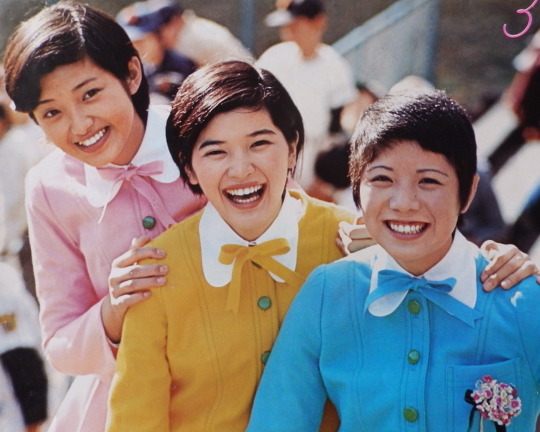
The Hana no Chuushan Trio: Momoe Yamaguchi, Junko Sakurada and Masako Mori.
At 13 years old, Masako Mori secured her place as the inaugural "Star Tanjo" grand champion in 1971. The following year, she debuted under Hori Production and swiftly soared to success. Mori's music was deeply influenced by enka, and by the end of the decade, she had solidified her status as a fully-fledged enka star. In 1986, she tied the knot with enka superstar Shinichi Mori, leading her to retire from the entertainment scene. However, in 2005, following her divorce, the former idol made a comeback, embarking on tours and participating in TV dramas for a few years before ultimately deciding to bid farewell to her career once more on her 60th birthday in 2019. Notably, she shares three children with Shinichi Mori, including TAKA, the lead vocalist of the famous rock band ONE OK ROCK.
Junko Sakurada clinched victory at "Star Tanjo" in 1972 at 14. Subsequently, she signed with Sun Music agency and Victor Music, marking her official debut in February 1973 with the release of "Tenshi mo yumemiru" (Angels Also Have Dreams). Given their similar age, niche, and close debut dates, the industry and some fans pitted her against Momoe Yamaguchi despite their behind-the-scenes friendship. Both idols enjoyed substantial popularity, with Yamaguchi usually holding an edge in sales. The exception was in 1975 when Junpei, as fans affectionately knew her, dominated as the best-selling female idol in music and bromide sales.
In addition to her music career, Junko excelled as an actress. In 1983, she opted to conclude her singing career to dedicate herself solely to acting. A decade later, in 1993, the former idol shocked Japan by announcing her participation in a mass wedding ceremony organized by the controversial South Korean Unification Church at the Olympic Stadium in Seoul. Her husband had been chosen for her by the church.
Her association with the cult brought her career to a halt. With her image becoming closely linked to the church, TV networks and advertisers distanced themselves from her. Consequently, Junko relocated from Tokyo, devoting herself entirely to her faith and family. Since then, she has made a few comebacks. In 2006, she published a highly-publicized essay book, and in 2013, she celebrated the 40th anniversary of her debut with a special concert. In 2017 and 2018, she returned to the stage, coinciding with her musical comeback and the release of a new album, "My Ideology."
After this project, Junko has remained out of the spotlight, with an official return unlikely unless she completely renounces her ties with the United Church. The cult's controversial image became even more repellent following the murder of former Prime Minister Shinzo Abe in July, committed by a young man who attributed his family's financial and psychological turmoil to the church. Consequently, the cult's unethical financial practices and ties to the ruling Liberal Democratic Party have become widely discussed topics in the country. For Junko Sakurada, her affiliation with the cult has overshadowed her otherwise successful decades-long career.
Completing the trio alongside Junko and Masako was Momoe Yamaguchi. Although Yamaguchi's career has eclipsed that of almost every other idol of the 1970s, she initially experienced the least success among the three young girls. Unlike her peers, both of whom had claimed grand champion titles at "Star Tanjou!," Momoe secured second place at her final showcase. Moreover, her debut single was the poorest-selling among the trio. However, she would ultimately emerge as the definitive idol, and her retirement would serve as the perfect conclusion to an epoch-making career.
While Momoe, Junko, Masako, Mari, Agnes, Rumiko, and Saori, among others, collectively set an impressive precedent for future female idols, male idols also played a significant role in the era. In terms of profitability, male idols reigned supreme, thanks to the unwavering loyalty of their female fanbase.
Johnny Kitagawa, the late founder of Johnny's Jimusho, eventually became the most influential figure in the entertainment industry. He monopolized this niche for decades with his boybands. However, during the 1970s, Kitagawa was not among the most powerful. Although his agency achieved considerable success with the boyband Four Leaves, it was soloist Hiromi Go who briefly held the nation under his sway between 1973 and 1974. Unfortunately for Kitagawa, this period of dominance proved fleeting, as Go departed for another agency in 1976, signaling that Johnny Kitagawa still had much to accomplish to solidify his authority.
With Johnny's domination still on the horizon, Hideki Saijo emerged as the most influential male idol of the 1970s. Saijo enjoyed success with several hit singles, including the ballad "Chigireta Ai," released in 1973, and 1979's "Young Man," a cover of Village People's "Y.M.C.A." Demonstrating the power of devoted fangirls, Saijo became the first domestic solo artist to perform a concert at Nippon Budokan. His popularity quickly transcended the Budokan, propelling him to the status of a stadium headliner and solidifying his position as the decade's top concert ticket seller.
The loyalty of fangirls meant that male idols consistently outperformed any act in ticket sales. In the 1960s, The Tigers, considered one of the pioneers of the "group sound" movement and regarded by many as Japan's first idol group, became the first domestic act to hold a stadium concert. By the following decade, the "group sound" era had ended, but some former band members successfully transitioned into solo careers.
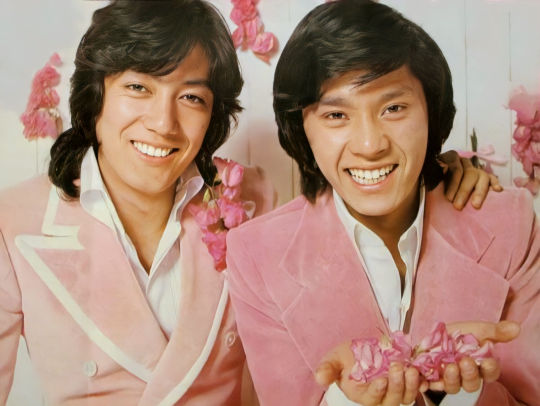
Kenji Sawada and Hideki Saijo, the two stadium-selling male idol superstars from the 80s.
Kenji Sawada, the former lead vocalist of The Tigers, remained a constant presence on the charts throughout the 1970s. Under the guidance of the influential Watanabe Pro agency, Sawada succeeded as a singer and actor. He brought a rockstar aura to his performances, incorporating impactful and extravagant visual elements and pioneering the use of makeup, drawing inspiration from David Bowie and glam rockers. In doing so, Sawada laid the groundwork for visual kei, a movement that would revolutionize Japanese rock in the late 1980s and early 1990s. Nicknamed "Julie" since his early days in the 1960s due to his admiration for Julie Andrews, Sawada continues to thrive as a prominent music figure in Japan, one of the few stars from that era still capable of selling out stadiums.
While girls' adoration often paves the way for male idols to enjoy lengthy careers, there are exceptions to this rule. In 1974, Finger 5 became one of the best-selling idol groups in the country. Comprising five young brothers from Okinawa, they were marketed as Japan's response to the Jackson 5 and consistently churned out hit singles. However, just two years later, their popularity took a nosedive. Several factors contributed to this decline, notably their heavy reliance on the two youngest members, aged only 10 and 12. These youngsters not only grappled with exhaustion from relentless work schedules but also faced the challenges of puberty, causing their voices to change and preventing them from hitting the right notes in their songs. Consequently, Finger 5 lost its appeal.
Finger 5's brief career underscores a crucial aspect of the idol industry: the importance of youthfulness. In Japan's gender-biased society, some male idols from the 1970s were granted the opportunity to age gracefully, evidenced by a few who maintained success well into their 60s and 70s. In contrast, female idols invariably confronted the pressures and inevitable decline associated with aging.
This brings us back to the quintessential idol of that era, Momoe Yamaguchi. By choosing to retire and steadfastly resisting any temptation to reenter the public eye, Yamaguchi effectively became frozen in time at 21 years old, her age at the moment she bid farewell to both showbiz and the public. This solidified her status as a legendary and unattainable icon—an idol who never aged.
70s Japan Trends Through the Music Charts (Part 3)
#enka#kayokyoku#momoe yamaguchi#70s japan#1970s#japanese music#jpop#discover japan#heibon punch#kenji sawada#hideki seiji#junko sakurada#70s idols#finger 5#mari tenchi#rumiko koyanagi#saori minami#four leaves#hiromi go
20 notes
·
View notes
Text
in love all over again
↳ as you walked down the aisle, the song that described the story of your love played in the background. or your wedding with them as opm (original pinoy music) songs note: lyrics are translated to english, and reader is referred to as the character's "wife" at the second song first song aka the one with iwa may or may not be specifically written for @berrisweet hihi my fav filo iwa enthusiast 🫶🏻





now playing, MUNDO (world) - IV Of Spades hold on tight, so you don't slip away. my love, you are now my home and my world let us forget the world, so we can be together
you were his anchor, and every time he looked you in the eyes was a silent plea for you to never let go. he prayed that you stay with him as nothing else mattered right now. not when he was standing face to face with his whole world right in front of the altar.
ᯓ iwaizumi hajime, miya atsumu, oikawa toru, kageyama tobio, kozume kenma, keigo takami, nanami kento, higuruma hiromi

now playing, LIGAYA (happiness) - mrld isn’t your heart torn about where to go? how about towards me, my love? please don’t worry, I won’t leave you alone. I will be with you, until the end
he made a promise to be the one to ground you when anxiety and worry swallowed you whole. he swore to be your happiness until the end. and now here you were, the both of you with grins as wide as they could be as you were announced husband and wife.
ᯓ bokuto kotaro, hinata shouyo, sugawara koushi, midoriya izuku, kaminari denki

now playing, UNANG SAYAW (first dance) - nobita until the last step of our dance, I know that I will love you forever I'll dance with you slowly, until you realize that I'm the one you need, and the one you want to marry
he told the moon about you, and danced with you right under the moonlit sky. you convinced him that he can find the love of his life. and now that he was your husband, he's sure that he'll be spending the rest of his life loving you.
ᯓ nishinoya yuu, kuroo tetsuro, kirishima eijiro, sero hanta, geto suguru

now playing, KUMPAS (compass) - moira dela torre I hope you can accept who I really am you are the sanctuary that I need even if you don’t know how many times you saved me. you are my destination, and my ending.
you were an unexpected blessing that gently broke down the walls he built to hide himself from the rest of the world. long before today, he dedicated to spend the rest of his life to you, his compass. him slipping the ring on your finger only solidified that dedication.
ᯓ tsukishima kei, sakusa kiyoomi, ushijima wakatoshi, bakugou katsuki, shinsou hitoshi, shoji mezou, gojo satoru

now playing, ARAW-ARAW (everyday) - ben&ben our eyes must have known each other long before they've met. how did you slowly captivate my heart? I will choose you now and everyday. what I feel for you is clear
he finds peace in just looking into your eyes. it's a sensation he can't explain. and no matter how many people he's looked in the eyes his entire life, he would choose your gaze looking back at him any day. and as you begin to share the same last name today, he's more than happy to be part of your every day.
ᯓ akaashi keiji, sawamura daichi, kita shinsuke, yamaguchi tadahi, todoroki shoto, rody soul, gojo satoru

navigation . . . ║ haikyuu masterlist ║ mha masterlist
a/n: this has been rotting in my drafts for a while now but since I was already emptying out my drafts
++ not to be biased but I absolutely love the concept of filipino love songs. especially unang sayaw, I had to hold back on writing a whole fic for it IT'S SO DOMESTIC AND SOFT AND AAAAAAAGH I LOVE IT also I think listening to the songs while reading this is really nice even though it's really short
#🖇️[ headcanons ]#mha#bakugou x reader#midoriya x reader#todoroki x reader#sero x reader#rody x reader#kirishima x reader#kaminari x reader#hawks x reader#shinsou x reader#haikyuu#atsumu x reader#oikawa x reader#iwaizumi x reader#suna x reader#kenma x reader#kuroo x reader#osamu x reader#bokuto x reader#hinata x reader#akaashi x reader#kageyama x reader#nishinoya x reader#jjk#gojo x reader#geto x reader#nanami x reader#higuruma x reader#tsukishima x reader
383 notes
·
View notes
Text
who said 'I love you' first?
------------------♥------------------
➼ they said it first
Nanami Kento, Geto Suguru, Hiromi Higuruma, Itadori Yuuji, Choso | Erwin Smith, Reiner Braun, Armin Arlert, Jean Kirstein, Connie Springer | Azumane Asahi, Hinata Shoyo, Nishinoya Yuu, Kuroo Tetsurou, Bokuto Koutarou, Sugawara Koushi, Tanaka Ryuunosuke | Nakahara Chuuya, Fukuzawa Yukichi, Nakajima Atsushi, Tanizaki Jun'ichirō, Oda Sakunosuke | Aki Hayakawa, Denji.
Ieiri Shoko, Tsukumo Yuki | Pieck Finger, Mikasa Ackerman, Ymir | Higuchi Ichiyō | Kobeni Higashiyama.
➼ you said it first
Fushiguro Megumi, Inumaki Toge, Gojo Satoru, Ryomen Sukuna, Fushiguro Toji, Okkotsu Yuuta | Levi Ackerman, Eren Yeager, Zeke Yeager | Sawamura Daichi, Kageyama Tobio, Tsukishima Kei, Oikawa Tooru, Yamaguchi Tadashi, Kozume Kenma | Akutagawa Ryunosuke, Dazai Osamu, Kunikida Doppo, Edogawa Ranpo, Fyodor Dostoevsky, Mori Ōgai, Nikolai Gogol.
Kugisaki Nobara, Iori Utahime, Zenin Maki, Mei Mei | Sasha Blouse, Historia Reiss, Hange Zoë, Annie Leonhart | Kiyoko Shimizu, Yachi Hitoka | Yosano Akiko, Ozaki Kōyō | Makima, Power.
------------------♥------------------
#jjk x reader#jujutsu kaisen x reader#aot x reader#attack on titan x reader#haikyuu x reader#bungou stray dogs x reader#bsd x reader#chainsaw man x reader#csm x reader#jujutsu kaisen#attack on titan#haikyuu#bungou stray dogs#chainsaw man
87 notes
·
View notes
Text
youtube
Ranma ½ (2024 TV anime) - PV1
The new TV anime adaptation of Rumiko Takahashi's Ranma 1/2 manga will premiere on October 5, 2024 at 24:55 JST (effectively, October 6 at 12:55 a.m. JST). The anime will exclusively stream on Netflix after its broadcast.
ano will perform the anime's opening theme song.

Key visual
Cast

Kappei Yamaguchi as male Ranma

Megumi Hayashibara as female Ranma

Noriko Hidaka as Akane Tendō
Minami Takayama as Nabiki Tendō
Kikuko Inoue as Kasumi Tendō
Kōichi Yamadera as Ryōga Hibiki
Rei Sakuma as Shampoo
Akio Ōtsuka as Sōun Tendō
Chō as Genma Saotome and Narrator
Staff
Kōnosuke Uda (One Piece: Dead End film, DAYS) is directing the new series at MAPPA. Kimiko Ueno (Delicious in Dungeon, Astro Note) is in charge of series scripts, and Hiromi Taniguchi (Kurage no Shokudō) is designing the characters.
Additional staff includes:
Original Creator: Rumiko Takahashi
Director: Kōnosuke Uda
Script: Kimiko Ueno
Character Design: Hiromi Taniguchi
Chief Animation Directors: Hiromi Taniguchi, Takeshi Yoshioka, Yoshiko Saitō, Nao Ōtsu
Main Animators: Nao Naitō, Rie Aoki
POP Artwork: Minami Kitamura
Art Director: Chihiro Ōkawa
Color Key Artist: Yukiko Kakita
Compositing Director of Photography: Atsushi Kanō
Editing: Keisuke Yanagi
Sound Director: Kōnosuke Uda
Sound Effects: Takuya Hasegawa
Music Selection: Makiko Chihara
Sound Production: dugout
Music: Kaoru Wada
Anime Production: MAPPA
Planning Production: Shogakukan-Shueisha Productions
25 notes
·
View notes
Text
𝕽𝖚𝖑𝖊𝖘 & 𝕯𝕹𝕴

➤ What I write!
fluff, angst, comfort. Character x reader, character x character, poly. M!Reader, GN!Reader, F!Reader. Drabble, headcanons, alphabet, fanfic.
Currently writing for Jujutsu Kaisen and One Piece!
➤ Who I write for!
Yuji Itadori, Megumi Fushiguro, Nobara Kugisaki, Maki Zenin, Toge Inumaki, Yuta Okkotsu, Kinji Hakari, Kirara Hoshi, Noritoshi Kamo, Aoi Todo, Toji Fushiguro, Shiu Kong, Satoru Gojo, Suguru Geto, Ieiri Shoko, Kento Nanami, Takuma Ino, Choso, Naoya Zenin, Hiromi Higuruma, Fumihiko Takaba, Charles Bernards, Junpei Yushino, Ryomen Sukuna, Uraume, Mahito [platonically] -JJK Tanjiro Kamado, Zenitsu Agatsuma, Inosuke Hashibira, Genya Shinazugawa, Hotaru Haganezuka, Yoriichi Tsugikuni, Gyutaro, Daki, Kaigaku, Akaza, Douma, Kokushibo, Kyogai, Muzan Kibutsuji, Kyojuro Rengoku, Gyomei Himejima, Muichiro Tokito, Giyu Tomioka, Sanemi Shinazugawa, Shinobu Kocho, Mitsuri Kanroji, Obanai Iguro, Tengen Uzui [with his wives] - KNY Izuku Midoriya, Katsuki Bakugo, Shoto Todoroki, Denki Kaminari, Eijiro Kirishima, Hanta Sero, Ibara Shiozaki, Neito Monoma, Tamaki Amajiki, Yo Shindo, Inasa Ioarashi, Keigo Takami, Shota Aizawa, Touya Todoroki, Himiko Toga, Atsuhiro Sako, Kai Chisaki. - BNHA Shoyo Hinata, Tobio Kageyama, Tadashi Yamaguchi, Kei Tsukishima, Ryunosuke Tanaka, Yu Nishinoya, Koushi Sugawara, Daichi Sawamura, Asahi Azumane, Toru Oikawa, Hajime Iwaizumi, Kentaro Kyotani, Tetsuro Kuroo, Kozume Kenma, Morisuke Yaku, Lev Haiba, Taketora Yamamoto, Takanobu Aone, Kanji Koganegawa, Kotaro Bokuto, Keiji Akaashi, Akinori Konoha, Wakatoshi Ushijima, Eita Semi, Satori Tendo, Tsutomu Goshiki, Yuji Terushima, Suguru Daisho, Kiyoomi Sakusa, Motoya Komori, Shinsuke Kita, Osamu Miya, Atsumu Miya, Rintaro Suna, Korai Hoshiumi. - Hq Monkey D. Luffy [platonically], Koby, Shanks, Roronoa Zoro, Sanji, Nami, Usopp, Buggy, Mihawk, Smoker, Portgas D. Ace, Sir Crocodile, Gild Tesoro, Eustass Kid, Killer, Trafalgar D. Water Law, Charlotte Katakuri, King, Donquixote Rosinante, Izo, Perona - OP [To be updated!]
Any other character not written in this list will not be accepted!
➤ What I DON'T write!
P*do, inc*st, zooph*lia, r*pe. Anything with v*mit, sc*t, p*ss. Smut.
➤ DNI!
racists, pedophiles, homophobes, sexists, proshippers.
➤ Remember that I'm a student, so if you send a request it might be take time. Please, be patient! ^.^
© ꜰᴏxɴɪᴋᴋɪ on tumblr - do not repost, copy, translate, modify, etc my work on any platform. Comments and reblogs are appreciated.
#rules#jjk x reader#jjk x y/n#jjk x you#jujutsu kaisen#jjk#demon slayer#kny#kimetsu no yaiba#kny x reader#kny x y/n#kny x you#my hero academia#mha#bnha#bhna x reader#bnha x you#bnha x y/n#haikyuu#hq x reader#hq x you#hq x y/n#one piece#op x reader#op x y/n#op x you#𐀔 𝐍𝐢𝐤𝐨𝐥𝐚 𐀔
47 notes
·
View notes
Text
siri what is a 'malewife'?
by infinitelyhere (itsspelledchloe) skater boy 🛹: about to go beef, ill post the video later! 😜🔥🔥 12:35 AM skater boy 🛹: i got my ass BEAT bruh im not posting that shit 😭💀🙏 kagAyama: EMBARASSINGGGGG 💀💀💀 or; hinata and reki make (multiple) groupchats to mash their friend groups up. it goes as well as you can expect. Words: 1760, Chapters: 2/?, Language: English Fandoms: SK8 the Infinity (Anime), Haikyuu!! Rating: Teen And Up Audiences Warnings: No Archive Warnings Apply Categories: M/M Characters: Hinata Shouyou, Kageyama Tobio, Kyan Reki, Hasegawa Langa, Chinen Miya, Sakurayashiki Kaoru | Cherry Blossom, Nanjo Kojiro | Joe, Higa Hiromi | Shadow, Tsukishima Kei, Yamaguchi Tadashi, Nishinoya Yuu, Tanaka Ryuunosuke, Shimizu Kiyoko, Yachi Hitoka, Azumane Asahi, More Characters Ill add later Relationships: Hinata Shouyou/Kageyama Tobio, Hasegawa Langa/Kyan Reki, Hinata Shouyou & Kyan Reki, Kageyama Tobio & Hasegawa Langa, Chinen Miya & Hasegawa Langa & Higa Hiromi & Kyan Reki & Nanjo Kojiro & Sakurayashiki Kaoru, Nanjo Kojiro | Joe/Sakurayashiki Kaoru | Cherry Blossom, Sawamura Daichi/Sugawara Koushi Additional Tags: Crossover, Texting, Fluff, chatfic, pre-established kagehina, CAN U BELIEVE THEY GOT THEIR SHIT FASTER THAN RANGA..., Light Angst, high school level humor, Alternate Universe - Canon Divergence, hinata and reki are childhood friends AU, Queer Themes, Identity Issues, Sexual Humor, Protective Hasegawa Langa, Insecure Kyan Reki, Mutual Pining, no beta we die like daichi, Inconsistent uploads source https://archiveofourown.org/works/59588668
#IFTT#fanfic#ao3feed#matcha blossom#matchablossom#ao3feed-matchablossom#sk8 the infinity#sk8 joe#sk8 cherry
11 notes
·
View notes
Text
Trigun MB Thoughts Part 5
Now we’re finally on the extras! This part have a bunch of mangakas but I only mentioned the ones who worked on mangas I know and might be familiar to you guys.

Thoughts on Trigun Badlands Rumble Cheerleaders under the cut!
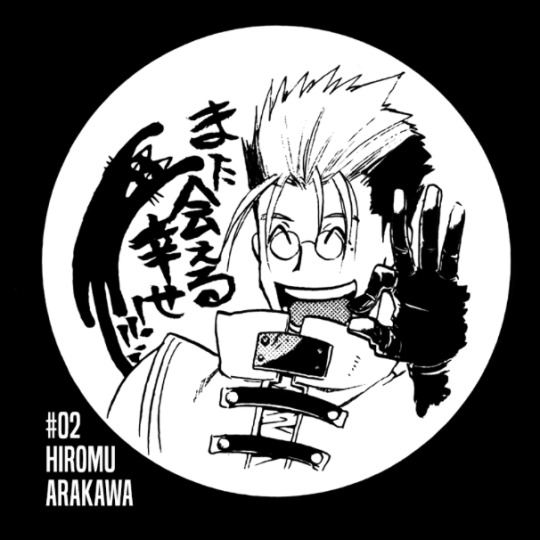
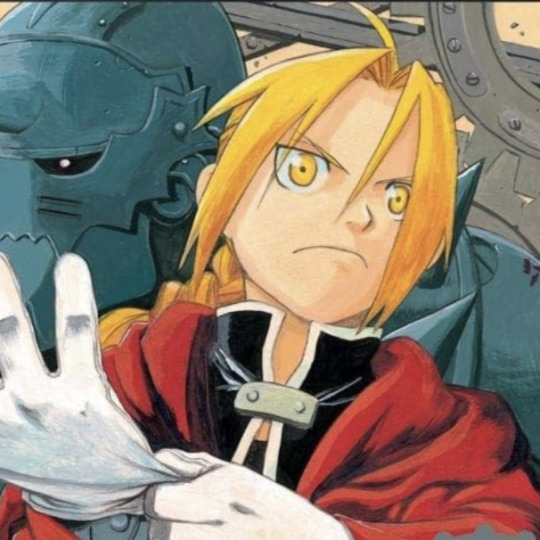
Mangaka: Hiromi Arakawa
Manga: Fullmetal Alchemist
(I don’t read or watch the anime but I’ve seen fanarts of Edward together with Vash. That makes sense, cuz he wears a red coat, have blonde hair and have a prosthetic arm like Vash! Heck, he even has a brother too.)
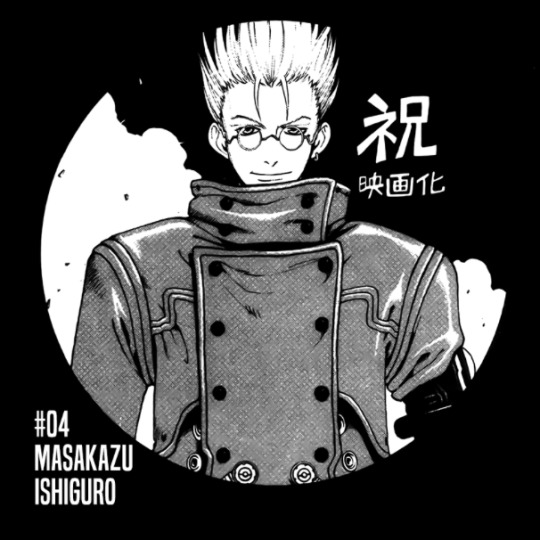

Mangaka: Masakazu Ishiguro
Manga: Heavenly Delusion
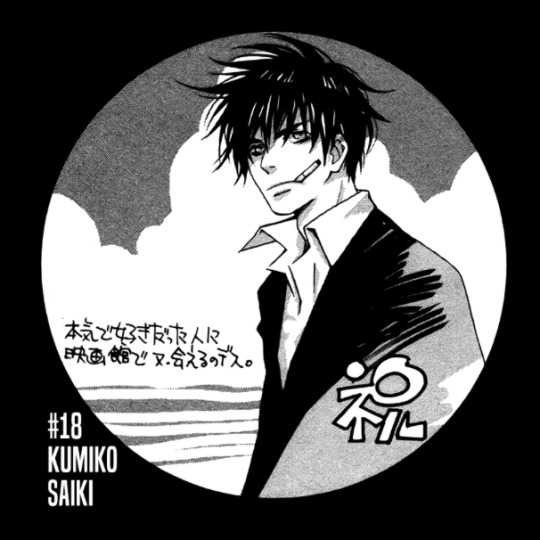
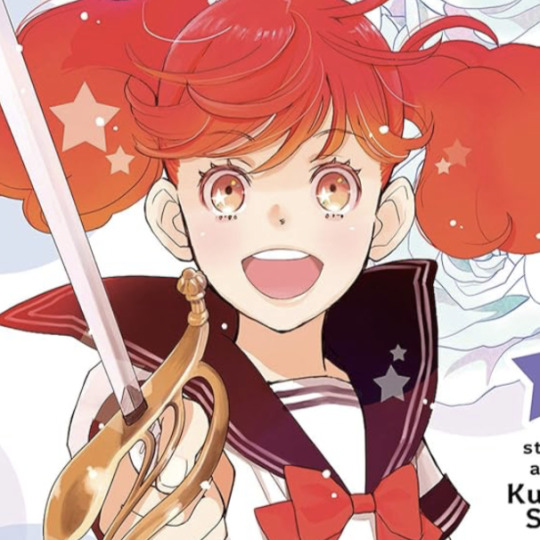
Mangaka: Kumiko Saiki
Manga: Kageki Shoujo!!
(My friend said this is like Blue Period (Tsubasa Yamaguchi) but instead of art it’s acting. I know there’s an anime of it and I know that episode 3 is gut-punching messed up)
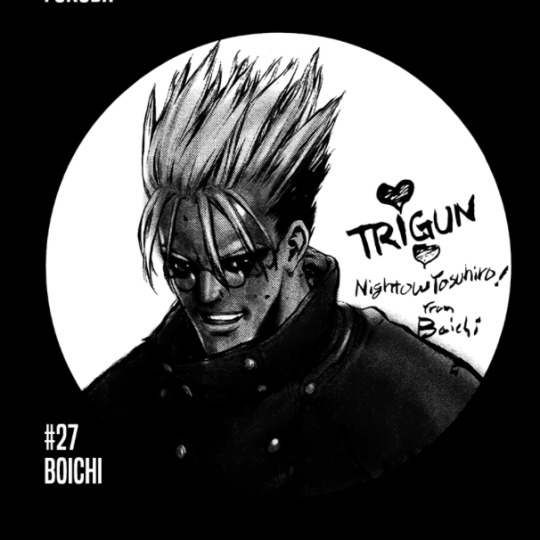

Mangaka: Boichi
Manga: Dr. Stone


Mangaka: Nobuhiro Watsuki
Manga: Rurouni Kenshin
(Wait, didn’t this author got arrested? (o_O))
Final thoughts: Sorry that I didn’t show all of the mangakas, most of them worked on manga I’m not familiar with and others worked on anime and games. There should be more stuff in Trigun Badlands Rumble Cheerleaders, but they haven’t been translated yet and there are other mangakas that are currently missing. So when they come out I’ll post a part 6.

Anyways, thank you so much for the translated scans of Trigun: Multiple Bullets, @trigun-manga-overhaul!
#trigun brainrot#trigunbookclub#trigun manga#trigun thoughts#trigun#trigun badlands rumble#vash the stampede#nicholas d. wolfwood#fullmetal alchemist#heavenly delusion#kageki shoujo!!#dr stone#rurouni kenshin
42 notes
·
View notes
Text
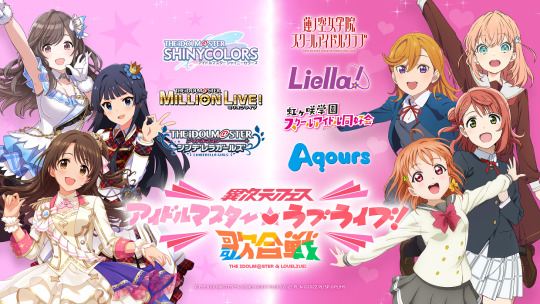
INTERDIMENSION FESTIVAL: IDOLM@STER★♥LOVE LIVE! UTA GASSEN
Information regarding the first IJIGEN FES 2023 live has been revealed! The live will occur in the TOKYO DOME on the 9th and 10th of December 2023. This first fes will feature three branches of IDOLM@STER performing with four branches of Love Live!
The voice providers participating in this stop are as follows:
DAY 1 ONLY
IDOLM@STER CINDERELLA GIRLS Kotomi Aihara (Shiki Ichinose), Hiromi Igarashi (Anzu Futaba), Asami Takano (Frederica Miyamoto), Yuki Nakashima (Yuuki Otokura), Yuko Iida (Kanade Hayami), Honoka Inoue (Nanami Asari), Sumire Uesaka (Anastasia), Aya Suzaki (Minami Nitta), Miyu Tomita (Akira Sunazuka), Ru Thing (Syuko Shiomi), Teru Ikuta (Natalia), Hina Tachibana (Nagi Hisakawa), Nanami Yamashita (Yui Ohtsuki) IDOLM@STER MILLION LIVE Haruka Yamazaki (Mirai Kasuga), Azusa Tadokoro (Shizuka Mogami), Machico (Tsubasa Ibuki), Momo Asakura (Serika Hakozaki), Kotori Koiwai (Tomoka Tenkubashi), Atsuki Nakamura (Roco Handa), Emi Hirayama (Reika Kitakami), Yui Watanabe (Nao Yokoyama) IDOLM@STER SHINY COLORS Karin Isobe (Kogane Tsukioka), Chisa Suginuma (Mamimi Tanaka), Anna Yamaki (Sakuya Shirase), Shio Watanabe (Yuika Mitsumine), Yuina Mizuki (Kiriko Yukoku), Honoka Kuroki (Amana Osaki), Ryoko Maekawa (Tenka Osaki), Noriko Shibasaki (Chiyuki Kuwayama), Yuu Wakui (Toru Asakura), Rio Tsuchiya (Madoka Higuchi), Saran Tajima (Koito Fukumaru), Miho Okasaki (Hinana Ichikawa), Azusa Shizuki (Nichika Nanakusa), Aya Yamane (Mikoto Aketa)
DAY 2 ONLY
IDOLM@STER CINDERELLA GIRLS Ayaka Ohashi (Uzuki Shimamura), Ayaka Fukuhara (Rin Shibuya), Sayuri Hara (Mio Honda), Amina Sato (Arisu Tachibana), Tomoyo Kurosawa (Miria Akagi), Hana Tamegai (Risa Matoba), Makoto Koichi (Haru Yuuki), Asaka Imai (Chie Sasaki), Natsumi Haruse (Kaoru Ryuzaki), Misaki Kuno (Nina Ichihara), Yuri Komori (Koharu Koga), Mina Nakazawa (Yukimi Sajo), Maki Hanatani (Kozue Yusa) IDOLM@STER MILLION LIVE Aimi (Julia), Miku Itou (Yuriko Nanao), Ibuki Kido (Kana Yabuki), Arisa Kori (Kaori Sakuramori), Yuri Komagata (Sayoko Takayama), Rie Suegara (Fuka Toyokawa), Saki Minami (Tsumugi Shiraishi), Rikako Yamaguchi (Rio Momose) IDOLM@STER SHINY COLORS Hitomi Sekine (Mano Sakuragi), Reina Kondo (Hiori Kazano), Mayu Mineda (Meguru Hachimiya), Hiyori Konno (Kaho Komiya), Haruka Shiraishi (Chiyoko Sonoda), Mariko Nagai (Juri Saijo), Wakana Maruoka (Rinze Morino), Akiho Suzumoto (Natsuha Arisugawa), Yuki Tanaka (Asahi Serizawa), Eri Yukimura (Fuyuko Mayuzumi), Sayaka Kitahara (Mei Izumi), Rina Kawaguchi (Luca Ikaruga), Haruna Mikawa (Hana Suzuki), Rena Ozawa (Haruki Iketa)
DAY 1&2
AQOURS (LOVE LIVE! SUNSHINE!!) Anju Inami (Chika Takami), Rikako Aida (Riko Sakurauchi), Nanaka Suwa (Kana Matsuura), Arisa Komiya (Dia Kurosawa), Shukai Saito (You Watanabe), Aika Kobayashi (Yoshiko Tsushima), Kanako Takatsuki (Hanamaru Kunikida), Aina Suzuki (Mari Ohara), Ai Furihata (Ruby Kurosawa) NIJIGASAKU SCHOOL IDOL CLUB Aguri Ohnishi (Ayumu Uehara), Mayu Sagara (Kasumi Nakasu), Kaori Maede (Shizuku Osaka), Miyu Kubota (Karin Asaka), Natsumi Murakami (Ai Miyashia), Akari Kito (Kanata Konoe), Coco Hayashi (Setsuna Imura), Maria Sashide (Emma Verde), Chiemi Tanaka (Rina Tennoji), Moeka Koizumi (Shioriko Mifune), Shu Uchida (Mia Taylor), Akina Homoto (Zhong Lanzhu). Support Member: Hinaki Yano (Yu Takasaki) Liella! (LOVE LIVE! SUPERSTAR!!) Sayuri Date (Kanon Shibuya), Liyuu (Keke Tang), Nako Misaki (Chisato Arashi), Naomi Payton (Sumire Heanna), Nagisa Aoyama (Ren Hazuki), Nozomi Suzuhara (Kinako Sakurakoji), Akana Yabushima (Mei Yoneme), Wakana Okuma (Shiki Wakana), Aya Emori (Natsumi Onitsuka), Yuina (Wien Margarete), Sakura Sakakura (Tomari Onitsuka) HASUNOSORA SCHOOL IDOL CLUB Nirei Nozomi (Kaho Hinoshita), Kokona Nonaka (Sayaka Murano), Nina Hanamiya (Kozue Otomune), Kotoka Sasaki (Tsuzuri Yugiri), Kanna Kan (Rurino Osawa), Kona Tsukine (Megumi Fujishima)
52 notes
·
View notes
Text
My Top 3 Favourite 90s J-Dramas
1. Beach Boys / ビーチボーイズ
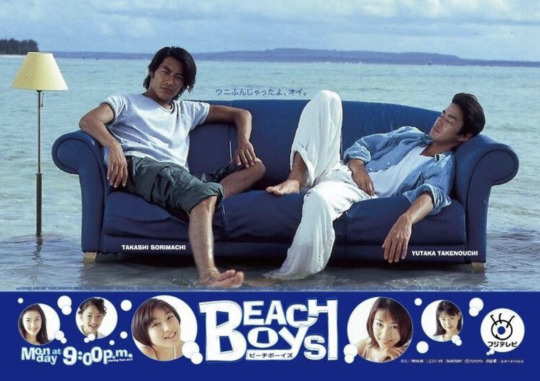
Hiromi (Sorimachi Takashi) is a drifter who drifts through life without a purpose not knowing what he wants in life until he arrives at a seaside inn and fell in love with the sea that he works at the inn.
Kaito (Takenouchi Yutaka) is a top corporate ace that suffers a burnout after an incident at work that he takes a vacation at the same inn where he decides to quit his job and work there with Hiromi.
Makoto (Hirosue Ryoko) is a high schooler whose parents have divorced and she is left in the care of her grandfather who is the inn's owner. She find her life more vibrant since the duo arrives.
It's a story of three individuals, each with their own baggages of life, wondering what the future holds for them as they try to make the best of the present, which they know won't last forever.
youtube
2. Long Vacation / ロングバケーション
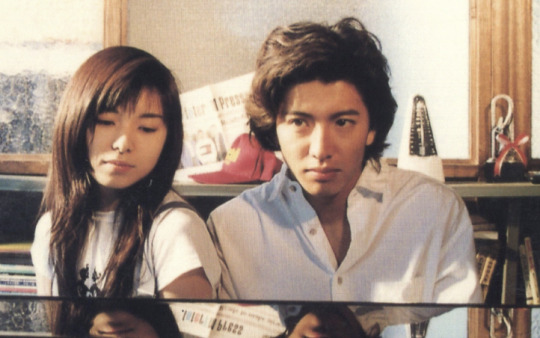
Sena (Kimura Takuya) is an aspiring pianist who struggles to achieve his dreams while working as a piano teacher and gets look down by his students who thinks he has no music skills.
Hayama (Yamaguchi Tomoko) is freelance model who struggles to find modeling opportunities as she grows older and her life turned upside down after she got dumped by her fiance.
The two end up living in the same apartment with affordable rent as they try to make sense of their lives and decides to take it as a "long vacation" from life to enjoy the present instead of worrying.
It's a story of two individuals struggling through life to achieve their dreams and contemplates giving them up in order to pursue something else in life or a day job just to survive.
youtube
3. Love Generation / ラブジェネレーション

Teppei (Kimura Takuya) is creative designer who got transferred to the sales department and struggles to adapt to the different work scope and rigid corporate setting and working environment.
Riko (Matsu Takako) is an office clerk working in the sales department who begins to get attracted to him but realises that he already have his eyes on someone he could never call his own.
By the time Teppei realises he had fallen for Riko whom he had spent a lot of time with and grew comfortable with, she was already set for an arranged marriage in her hometown.
It's a story of two individuals who are confused by love, each unsure if the feelings they have for each other are really love or just loneliness that yearns for each other's company in life.
youtube
90s J-Dramas just hit different, with the air of nostalgia, memorable songs, relatable life stories, characters with strong chemistry and perfect comedy timings. They make you smile and teary eyed.
#beach boys#ビーチボーイズ#sorimachi takashi#yutaka takenouchi#ryoko hirosue#inamori izumi#long vacation#ロングバケーション#kimura takuya#yamaguchi tomoko#love generation#ラブジェネレーション#matsu takako#japanese drama#j drama#jdrama#dorama#japan#asian drama#90s drama#slice of life drama#romance drama#comedy drama#my recommendations
24 notes
·
View notes
Text
Seven Seas Entertainment Licenses the I'll Forget You Starting Today, Senpai! Manga
Seven Seas Entertainment has announced that it has acquired the license for the I’ll Forget You Starting Today, Senpai! manga series by Megumi Yamaguchi. One woman’s unexpected reunion with her high school boyfriend goes totally wrong in this josei rom-com. Hiromi is suddenly reunited with her high school boyfriend–at a professional match-making service. But their reunion isn’t a sweet one,…
0 notes
Text
︶︶ ⸝⸝ 🍓 ꒰ about me + rules !! . . . . .




ABOUT ME !!
daydream / day / reaper ⋆ she/they ⋆ 20
06/24 ⋆ pan . poly . greyace ⋆ single 😔
DNI / BYF !!
⋆ dni if racist , homophobic , zionist , sexist , etc ect
⋆ dni if you only plan on just hating on people and stuff. it ruins the mood and i just don't wanna be surrounded by that all the time
⋆ dni blank/ageless blogs (tumblr and their bots and trolls sigh)
⋆ this is mostly directed towards the motorsport fandom, but i am not a person who hates on anyone unless they are genuinely proven to be problematic. i'm directing this towards the max haters. this does still include the anime fandoms aswell. so dni if you are a person who unnecessarily hates on people for liking characters or people you don't like (unless they are literally a proven bad person)
RULES / EXTRA INFO !!
⋆ i plan on releasing a collection of fic recommendations every friday, but if i miss a week or two i'll definitely try and tell you guys beforehand. i'll definitely try not to leave for too many weeks, but sometimes i get too distracted by life
⋆ you are very welcome to recommend fics, and i'll most likely include it in the friday release or as a quick fic rec reblog. but do please be patient when it comes to recommending fics. i'd like to say i have a lot of free time, but i can still get busy or just not feeling being on tumblr atm
⋆ please please don't be afraid to interact with me through comments or asks. i enjoy interacting with you guys. but also don't feel pressured too either
⋆ don't pressure me to recommend fics for certain characters not on my list. i get that you would like some recommendations for them, but i just don't feel like i can properly do that when i just don't read fics for them at all. although they may show up in multi-character fics
⋆ be looking out for more characters and fandoms added to my list
⋆ I go through phases when it comes to what characters i read fics for, so fandoms may be on my list that i'm not currently recommending fics for. but i will definitely recommend them in the future, and i will probably throw in the occasional fic in my recs that show up on my feed
⋆ i don't rec fics that are explicit. they may be suggestive, but i personally don't really read fics that are solely that. though there are fics that have scenes that i personally just skip over, and if i might rec a few of those, but i'll make sure to point that fact out.
FANDOMS AND CHARACTERS I REC !!
⋆ jujutsu kaisen : satoru gojo, suguru geto, shoko ieiri, yuuji itadori, megumi fushiguro, maki zenin, toge inumaki, yuuta okkotsu, noritoshi kamo, takuma ino, yuki tsukumo, sukuna ryomen, hiromi higuruma, choso kamo
⋆ bungo stray dogs : osamu dazai, ranpo edogawa, chuuya nakahara, edgar allen poe, fyodor dostoevsky, nikolai gogol, sigma, saigiku jouno, tetcho suehiro
⋆ formula one : lewis hamilton, george russell, charles leclerc, carlos sainz, max verstappen, daniel ricciardo, yuki tsunoda, nyck de vries, liam lawson, pierre gasly, lando norris, oscar piastri, alex albon, mick schumacher, paul aron, arthur leclerc, ollie bearman
⋆ chainsaw man : denji , aki hayakawa
⋆ haikyuu : shoyo hinata, tobio kageyama, tadashi yamaguchi, yuu nishinoya, tetsuro kuroo, kenma kozume, toru oikawa, hajime iwaizumi, kanji koganegawa, kotaro bokuto, keiji akaashi, eita semi, satori tendo, yuuji terushima, kiyoomi sakusa, shinsuke kita, astumu miya, osamu miya, rintaro suna, korai hoshiumi
1 note
·
View note
Text
march 2023 reading wrap-up
quick overview of what i read in march:
Strange Weather in Tokyo by Hiromi Kawakami
Galatea by Madeline Miller
Kitchen by Banana Yoshimoto (re-read)
Grandmaster of Demonic Cultivation Vol 3 by Mo Xiang Tong Xiu
Grandmaster of Demonic Cultivation Vol 4 by Mo Xiang Tong Xiu
City of Nightmares by Rebecca Schaeffer
Foster by Claire Keegan
Blue Period Vol 6 by Tsubasa Yamaguchi
1 note
·
View note
Text
who fell first, who fell harder (men ver.)
__________________♥__________________
➼ you fell first, he fell harder
Fushiguro Megumi, Nanami Kento, Geto Suguru, Higuruma Hiromi | Levi Ackerman, Erwin Smith | Sawamura Daichi, Azumane Asahi | Akutagawa Ryunosuke, Nakahara Chuuya, Fukuzawa Yukichi, Nikolai Gogol | Aki Hayakawa.
➼ he fell first, you fell harder
Gojo Satoru, Inumaki Toge | Reiner Braun, Armin Arlert | Hinata Shoyo, Nishinoya Yuu, Kuroo Tetsurou, Bokuto Koutarou | Dazai Osamu, Kunikida Doppo, Oda Sakunosuke.
➼ you fell first, you fell harder
Ryomen Sukuna, Fushiguro Toji | Eren Yeager, Zeke Yeager | Kageyama Tobio, Tsukishima Kei, Oikawa Tooru, Kozume Kenma | Edogawa Ranpo, Fyodor Dostoevsky, Mori Ōgai.
➼ he fell first, he fell harder
Itadori Yuuji, Choso, Okkotsu Yuuta | Jean Kirstein, Connie Springer | Yamaguchi Tadashi, Sugawara Koushi, Tanaka Ryuunosuke | Nakajima Atsushi, Tanizaki Jun'ichirō | Denji.
__________________♥__________________
(women ver.)
#jujutsu kaisen x reader#jjk x reader#attack on titan x reader#aot x reader#haikyuu x reader#bungou stray dogs x reader#bsd x reader#csm x reader#chainsaw man x reader#jujutsu kaisen#bungou stray dogs#haikyuu#chainsaw man#attack on titan
127 notes
·
View notes
Text
Hiromi Yamaguchi didn’t even turn to look at Hiro. She stared straight out the front window, “I assume you’re getting in?”
@ask-kurusu-syo
Osamu pulled up to the curb to pick Hiro up at the end of the day. He glanced into the rear view mirror, gripping the steering wheel hard.
“Is that him?” She asked from the backseat, peering out the tinted window.
Osamu’s knuckles were white and his hands shook. He said nothing.
Her dark red lips curled into a sneer, “Lock the front door. Make sure he sits in the back with me,”
Still Osamu said nothing, but he did as he was told.
67 notes
·
View notes
Photo
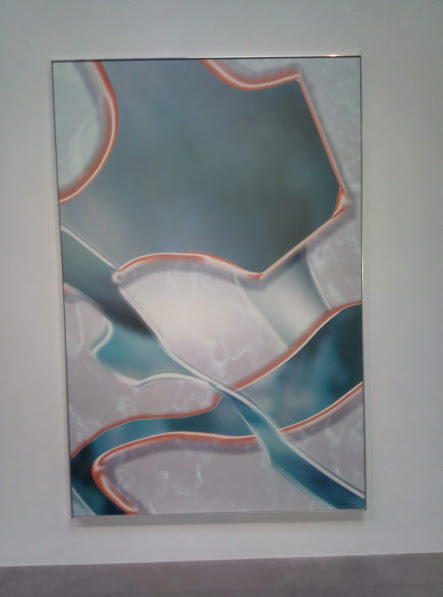
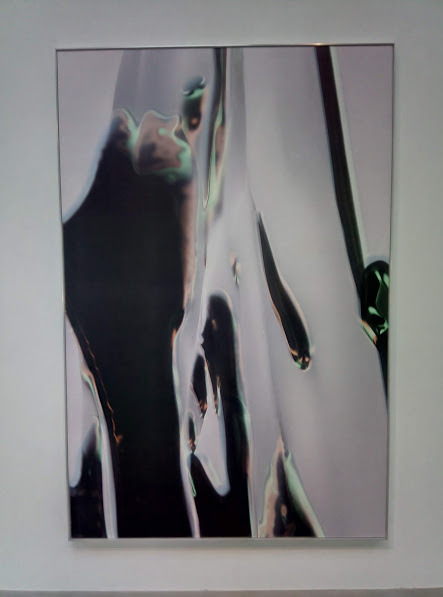
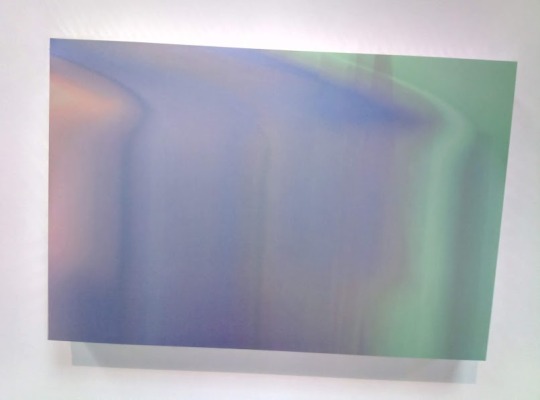
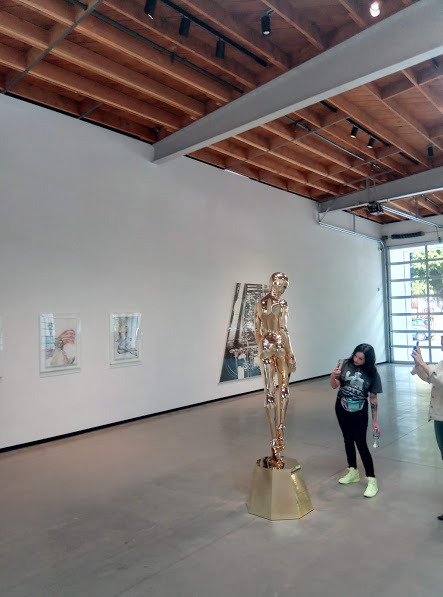
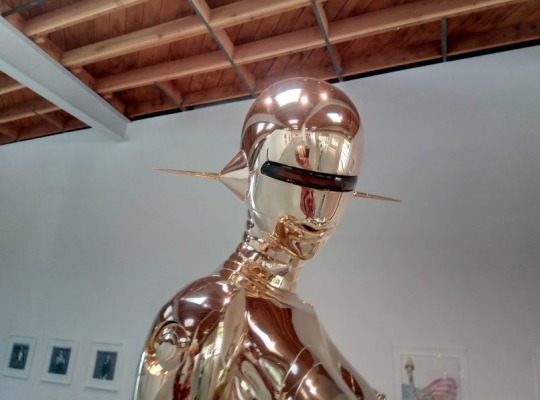

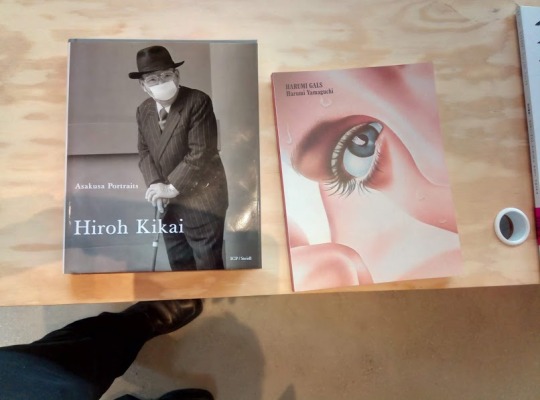
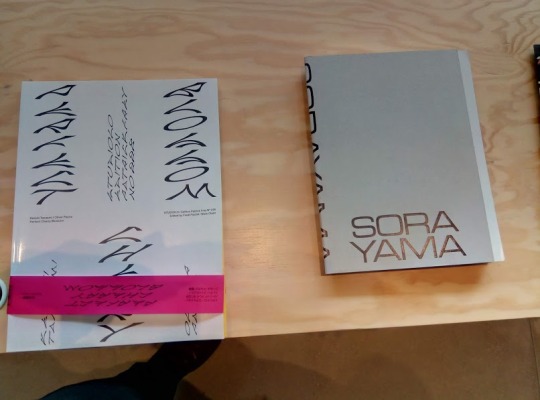

Last post of pictures from the Jeffrey Deitch Tokyo Pop Underground exhibit.
There is a lot more to see, but a lot of it is NSFW.
Go see it for yourself: http://deitch.com/los-angeles/exhibitions/tokyo-pop-underground
#jeffrey deitch#tokyo pop underground#art#hajime sorayama#hiromi yamaguchi#hiroh kikai#hiroki tsukuda#keiichi tanaami#haroshi#tetsuya nakamura#toshio saeki#makoto taniguchi#kazuki umezawa#yuichi yokoyama
8 notes
·
View notes